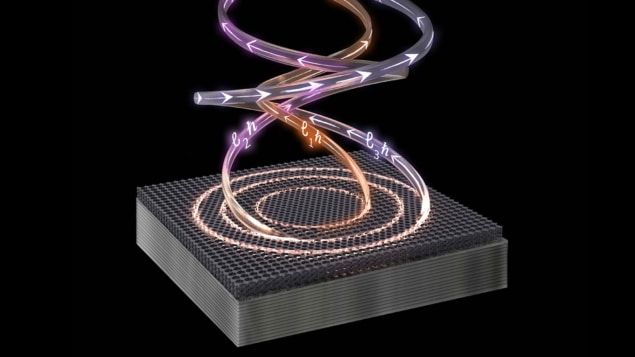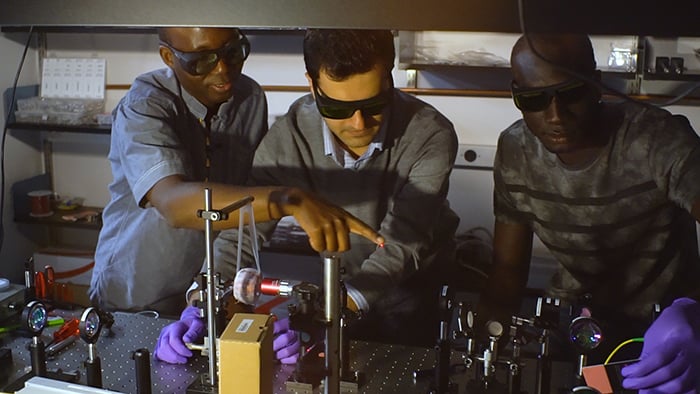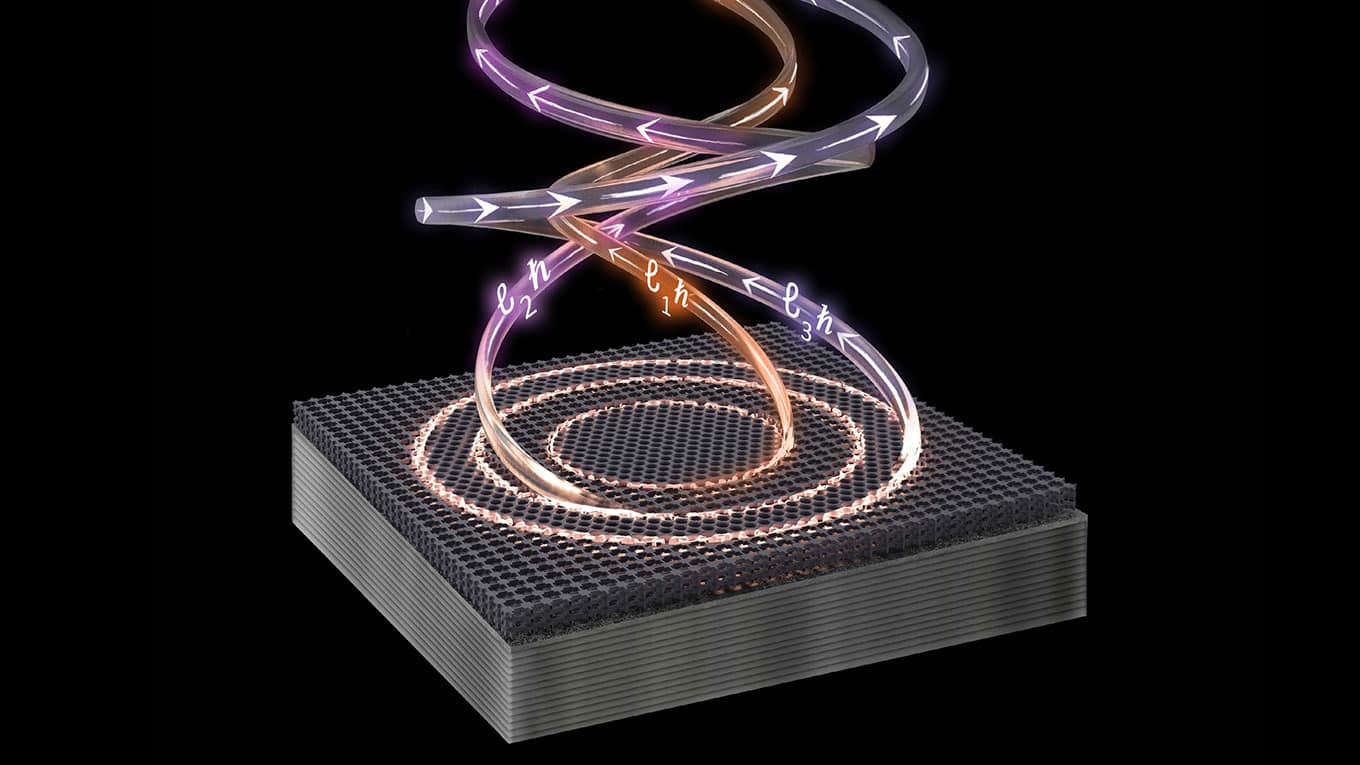
A compact, integrated light source that simultaneously produces multiple laser beams with different, very high orbital angular momenta has been unveiled by US researchers. The technology may mark a significant step towards orbital angular momentum multiplexing at scale, which could potentially vastly increase Internet speeds.
Interactions between light signals in an optical fibre are negligible, which means that multiple signals can travel down the same fibre simultaneously in a process called multiplexing. As the world’s hunger for faster data transfer grows insatiably, various schemes to use multiplexing to squeeze more data into fibres have been developed.
To ensure that the signals do not get mixed up, they must be sent using independent – or orthogonal – channels. One tantalizing and seemingly simple option is to encode data into the orthogonal angular momentum states of photons: with each state being an independent channel.
The most familiar type of angular momentum photons carry is circular polarization, or spin. This involves the rotation of the axes of the electric and magnetic fields around the wavefront as a photon propagates. Several telecommunications companies are working to incorporate “polarization division multiplexing” into their systems. However, circular polarization has only two orthogonal states so it can at best double a network’s capacity.
Infinite multiplexing
Photons also carry orbital angular momentum (OAM), which involves the wavefronts themselves coiling around the axis of propagation. Symmetry considerations require that this be quantized, but there is no other restriction on how tightly the wavefronts can coil. The OAM – and therefore the potential number of signals multiplexed – is, in principle, infinite.
However, multiplexing signals using OAM in a realistic setup has been tricky. Although light sources can generate beams with high OAM, changing the OAM requires moving parts such as metasurfaces, which is not feasible for a high-speed telecommunications source outside the laboratory. While lasers can achieve ultrafast switching, they produce relatively low OAM.
In 2017, Boubacar Kanté and colleagues at the University of California, San Diego showed how an arbitrarily-shaped laser cavity subjected to a magnetic bias could be produced at the interface between two photonic crystals, allowing light to snake its way around the path but not to escape it. The researchers attributed this to the creation of topologically-protected light paths by the photonic quantum Hall effect, although this explanation has been disputed by some other physicists.
Edge states
Kanté is now at the University of California, Berkeley where his team is focused on making the light travel along circular paths in the cavity by patterning the photonic crystals to create topologically distinct edge states. Whereas the previous work kept the light confined between the photonic crystals, these edge states are designed to transmit light in one direction.
“At every point in the cavity, these topological rings are actually leaking some of their energy out,” says Kanté.
In their latest experiment, the researchers produced a photonic crystal that simultaneously supported edge states with OAMs of 100, 156 and 276 clockwise, anticlockwise and clockwise respectively. But they could, in principle, have generated any OAM beams with a sufficiently complex resonator. The device is fully integrated with no moving parts – the magnetic field is supplied by etching the quantum wells onto a magnetic substrate.
“This is the first time in history that a laser about the size of a human hair can generate an OAM greater than 200…We can now directly multiplex any number of OAMs of any charge in a simple and compact device,” says Kanté.

Physicists create first ‘topological’ laser
Liang Feng of the University of Pennsylvania believes the work marks an important step: “The underlying concept about the generation of the OAM beam is very similar to what we demonstrated in 2016,” he says. “First you need to have unidirectional light propagation in the platform and then you apply the appropriate phase matching condition to guide the light out. In our ring lasers we had confined waveguide modes, so we used gratings to help couple the light out. The beauty of this is that, if you have an angular grating inscribed on the ring cavity, the order number you could generate would be very limited, but in this case the order generated can be huge.”
Andrea Alù of the City University of New York is also impressed by the potential applications of the work: “I believe the final result is interesting, and the response is something people are after,” he says. He notes, however, that the magnetic substrate could complicate fabrication and integration at scale, and may not be strictly necessary: “The same principle may be applied to a reciprocal system which supports these edge states without relying on the quantum Hall effect,” he says: “The open question is what does this magnetic effect buy the authors?”
The research is described in Nature Physics.
